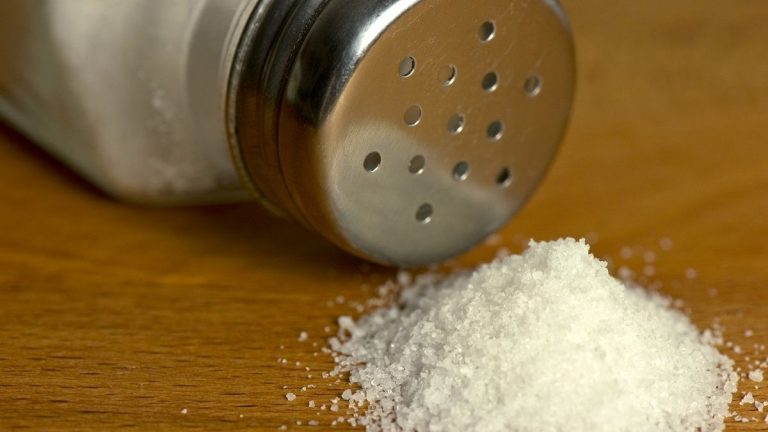
Electrolytes are part of the substances present in the blood and that can be evaluated when a blood test is carried out. It is one of the tests most requested by doctors and consists of measuring the blood levels of the most important electrolytes or ions.
What are electrolytes?
Electrolytes are ions present in the blood that are involved in a multitude of body functions. Sodium and potassium are commonly measured in a blood test, less commonly calcium and chlorine, and, in special circumstances, phosphorus and magnesium.
Electrolytes allow the identification of problems in the body’s hydro-electrolyte balance, which is essential for the maintenance of important functions, such as the functioning of the heart, muscles, or the nervous system.
Electrolytes: normal values
In the following table, you can see the values considered normal for the most important ions.
Electrolytes
Normal electrolyte levels.
The alterations can occur in the different electrolytes present in the blood.
High sodium
The hypernatremia is increasing sodium levels. It occurs in situations of dehydration, although it can also appear in various kidney problems or so-called diabetes insipid us, a disorder in the regulation of the body’s water balance.
In contrast, hyponatremia is the decrease in sodium levels. It can appear in various kidney problems, but also in many other metabolic processes: hypothyroidism, diabetes, excess ADH (ant diuretic hormone). It can also appear as a result of severe diarrhea or vomiting and with taking diuretics and other medications (amitriptyline, carbamazepine, or sertraline).
High potassium
The hyperkalemia or hyperkalemia is increased potassium levels. It can occur in advanced kidney failure, in people with diabetes, in adrenal gland failure, and various metabolic problems. It can also appear as a result of treatment with some medications such as diuretics, ACE inhibitors, or angiotensin-converting enzyme, among others.
In contrast, hypokalemia or hypokalemia is the decrease in potassium levels. It can occur in malnourished people, in various kidney problems, as a result of severe diarrhea and/or vomiting or taking diuretics, in Cushing’s syndrome (excess functioning of the adrenal gland), etc.
High calcium
Hypocalcemia is excess calcium levels. It can occur in hyperthyroidism, hyperparathyroidism, in various bone diseases (including tumors and metastases), as a consequence of taking various medications, or in people with an excessive intake of vitamin D.
In contrast, hypocalcemia is the decrease in calcium levels. It can occur in hyperparathyroidism, kidney failure, and as a consequence of intestinal malabsorption syndrome. It may also appear associated with pancreatitis or people with poor intake of vitamin D.
High chlorine
Elevated and decreased levels of chlorine in the blood are hyperchloremia and hypochloremia, respectively. Except in specific cases, the increase or decrease in chlorine levels tends to parallel those of sodium. However, in certain situations of acidosis, there may be a specific increase in chlorine levels.
High phosphorus
Elevated or decreased blood levels of phosphorus lead to hyperphosphataemia and hypophosphatemia, respectively. The increase or decrease in phosphorus levels can occur in many different metabolic processes: alterations in kidney function, diabetes, alterations in the thyroid and parathyroid glands, among others.
High magnesium
The increased or decreased levels of magnesium in the blood are hypomagnesemia and hypomagnesemia, respectively. Increased levels of magnesium occur in kidney failure or in people who ingest an excess of magnesium.
On the contrary, the decrease in magnesium levels can occur, among other causes, as a consequence of prolonged diarrhea, a kidney problem, a malabsorption syndrome, or a situation of malnutrition. It can also occur after taking various medications or in people with poorly controlled diabetes.
The usefulness of the ionogram
The ionogram shows us the levels of ions or electrolytes within a blood test. Its usefulness is very wide, which makes it one of the most demanded laboratory tests. Especially, it is useful to assess the integrity of the hydro electrolyte and acid-base balance, essential for the correct functioning of the various body systems.
Thus, the determination of sodium values, for example, is particularly important in the diagnosis of dehydration. On the other hand, altered potassium levels can have a significant impact on the electrical activity of the heart. Likewise, the determination of calcium is a fundamental element in the diagnosis of various bone problems and the functioning of the parathyroid glands. Finally, the determination of chlorine, phosphorus, and magnesium can provide valuable information on various metabolic processes.






